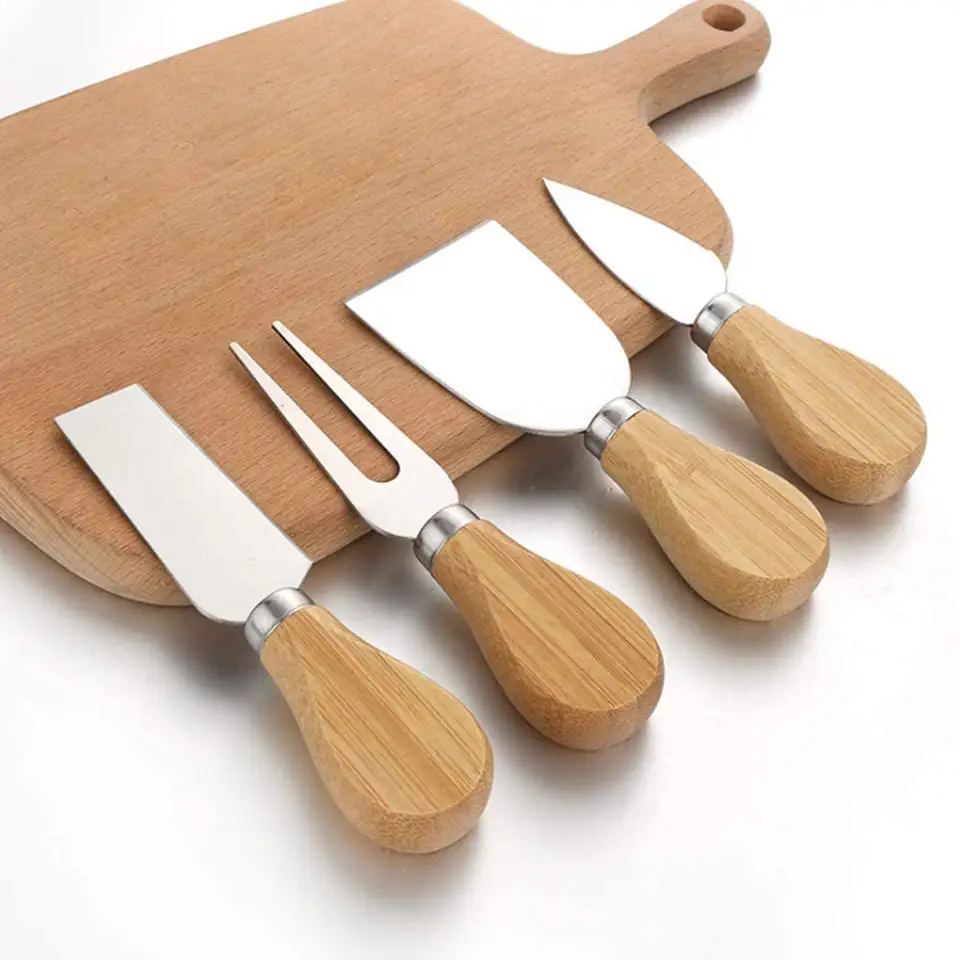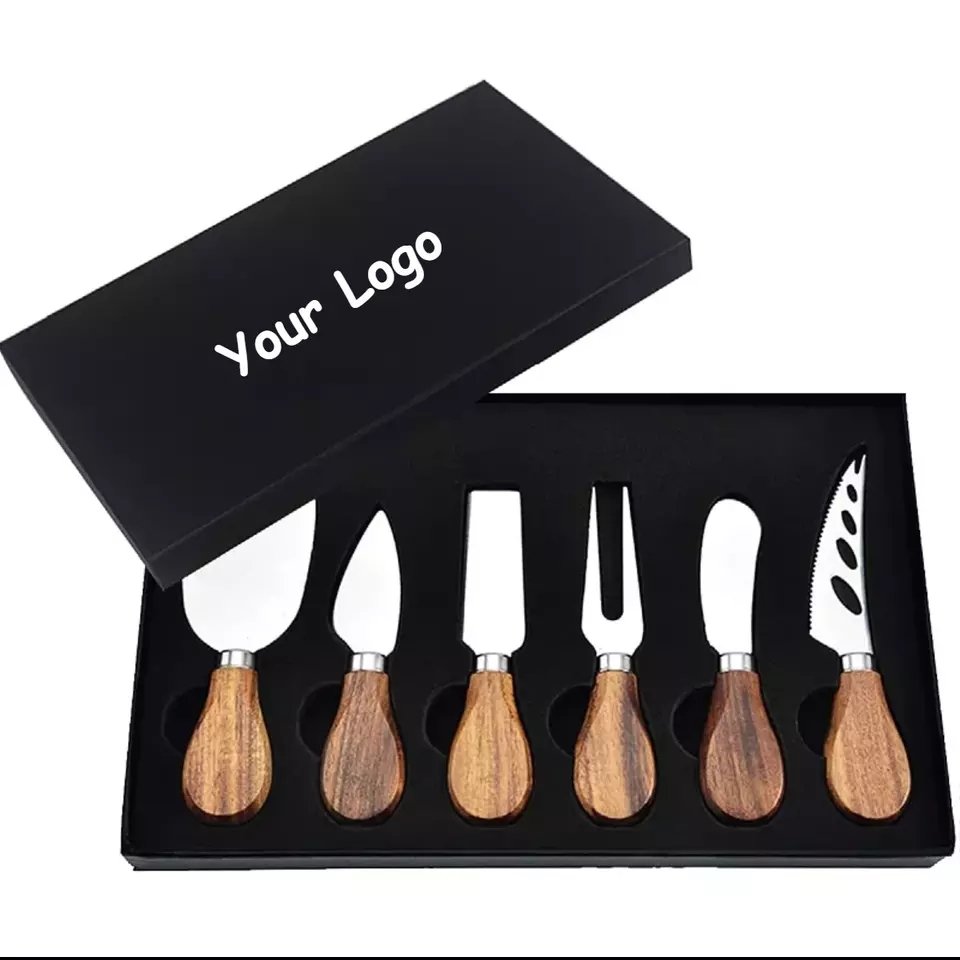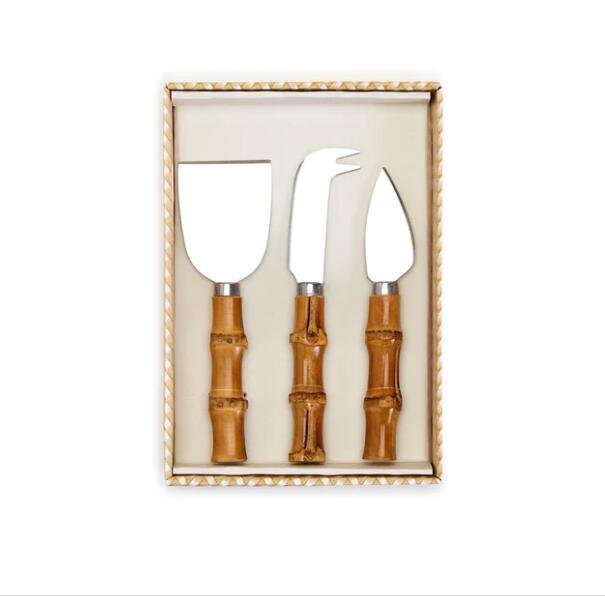Struggling to choose a trustworthy cutlery manufacturer in China? Afraid of poor quality or safety concerns hurting your brand reputation?
A reputable Chinese cutlery set manufacturer provides safe, high-quality utensils made from stainless steel, bamboo, porcelain, and silver, meeting global standards through rigorous testing and certification processes.
If you’re seeking reliable cutlery from China, let me guide you through materials, production insights, and global comparisons to help you choose confidently.
Table of Contents
What cutlery do they use in China?
Ever wondered if Chinese dining is only about chopsticks? Curious about what else is on the Chinese dining table?
In China, people mainly use chopsticks, ceramic spoons, bamboo utensils, and increasingly, stainless steel cutlery, especially forks and knives in Western-style restaurants and urban households.
Understanding Traditional and Modern Chinese Cutlery
When people think about Chinese cutlery, the first thing that often comes to mind is chopsticks. That’s true, chopsticks are very common. But in reality, Chinese dining includes many different kinds of utensils. Let me show you more clearly.
Traditional Chinese Utensils
Traditional Chinese utensils are typically crafted from materials like bamboo, wood, porcelain, and jade. Each material has cultural significance.
| Material | Common Uses | Benefits | Drawbacks |
|---|---|---|---|
| Bamboo | Chopsticks, Spoons | Eco-friendly, Lightweight | May splinter over time |
| Porcelain | Soup Spoons, Bowls | Elegant, Durable | Fragile, can chip easily |
| Wood | Chopsticks, Serving Utensils | Natural, Heat-resistant | Can absorb odors |
Modern Chinese Utensils
Nowadays, stainless steel cutlery, such as forks, knives, and spoons, is becoming popular, especially among younger generations and urban areas. This shift is largely influenced by Western dining culture.
| Material | Common Uses | Benefits | Drawbacks |
|---|---|---|---|
| Bamboo | Chopsticks, Spoons | Eco-friendly, Lightweight | May splinter over time |
| Porcelain | Soup Spoons, Bowls | Elegant, Durable | Fragile, can chip easily |
| Wood | Chopsticks, Serving Utensils | Natural, Heat-resistant | Can absorb odors |
Traditional utensils remain common in homes and restaurants that serve local cuisine. However, due to globalization, metal cutlery has seen increased popularity, especially in larger cities. My experience with customers from different countries also confirms a growing interest in mixed utensil sets, including both traditional and Western-style cutlery.
Where is metal cutlery made?
Feeling unsure about where metal cutlery actually comes from? Concerned about manufacturing quality and transparency?
Metal cutlery production mainly happens in China, Germany, Japan, India, and Brazil, with China being the largest exporter, offering competitive prices and comprehensive manufacturing capabilities.
Dive Deeper: Key Countries Producing Metal Cutlery
Metal cutlery production varies by country due to differences in manufacturing capabilities, materials quality, and labor costs. Let’s analyze the strengths and weaknesses of the main producing countries:
| Country | Strengths | Weaknesses |
|---|---|---|
| China | High-volume production, competitive pricing, customization options | Quality control varies by manufacturer |
| Germany | Superior craftsmanship, high-end materials, precision production | Higher manufacturing costs |
| Japan | High-quality steel, precise craftsmanship | Higher cost, limited mass-production |
| India | Affordable labor, variety of designs | Inconsistent quality control |
| Brazil | Stainless steel expertise, durable products | Limited global reach, high export costs |
China, in particular, has invested heavily in advanced manufacturing technology. Companies, including ours at Brilliant, ensure quality through certifications like FDA, LFGB, and DGCCRF. While some buyers worry about quality from China, reputable companies like ours prioritize transparency and international standards. My clients from Europe and North America consistently report satisfaction with Chinese-manufactured products, thanks to rigorous quality controls.
What is the best cutlery made of?
Unsure which material provides the best balance between quality and affordability for your cutlery?
The best cutlery is typically made from stainless steel, especially 18/10 grade, offering durability, rust resistance, and a polished appearance suitable for both casual and formal dining settings.
Evaluating Cutlery Materials
Choosing cutlery material requires understanding each material’s pros and cons clearly. Let me share a detailed comparison based on my 10 years in the industry:
| Material | Advantages | Disadvantages |
|---|---|---|
| Stainless Steel | Durable, corrosion-resistant, affordable | May show scratches over time |
| Silver-plated | Elegant, traditional, good aesthetics | Tarnishes easily, high maintenance |
| Bamboo/wood | Eco-friendly, lightweight | Limited lifespan, prone to wear |
| Titanium | Extremely durable, lightweight | Expensive, limited designs |
While stainless steel remains my favorite recommendation due to balance, some luxury or eco-conscious clients prefer silver-plated or bamboo cutlery. However, stainless steel, specifically the 18/10 type (18% chromium, 10% nickel), continues to provide the best overall value, making it popular among my global clients.
Is silverware made in China safe?
Worried about safety standards when considering silverware from China?
Yes, silverware made in China is safe if sourced from certified manufacturers. Reliable manufacturers comply strictly with international safety standards, such as FDA and LFGB, ensuring products are free from harmful chemicals.
How to Ensure Safety of Chinese-made Silverware
Safety concerns are normal when importing products, especially utensils that directly contact food. As a supplier who regularly deals with these concerns, let me guide you clearly on what to check.
Essential Safety Certifications
| Certification | Region | Importance |
|---|---|---|
| FDA | US | Confirms products free from harmful substances |
| LFGB | EU | Ensures materials are safe for food contact |
| DGCCRF | France | Verifies compliance with strict French standards |
| BSCI | Global | Confirms ethical labor practices and safety |
At Brilliant, we maintain all these certifications, assuring our customers of safe, reliable products. Always look for these certifications and verify documentation with your supplier. Reliable manufacturers willingly provide test reports, ensuring peace of mind about safety.

What country makes the best cutlery?
Unsure about which country produces the finest cutlery that balances quality, design, and affordability?
Germany and Japan produce the highest-quality cutlery, known for superior materials and craftsmanship. However, China provides the best value by balancing good quality, customization options, and cost-effectiveness.
Comparing Cutlery-Producing Countries
Countries vary widely in their cutlery production strengths:
| Country | Quality | Cost | Customization | Mass-production |
|---|---|---|---|---|
| Germany | Excellent | High | Moderate | Limited |
| Japan | Exceptional | Very High | Limited | Limited |
| China | Good–Excellent | Competitive | High | Excellent |
| India | Moderate | Low | Moderate | Good |
Germany and Japan produce cutlery favored by high-end consumers and specialized markets. Yet, China’s strengths in providing customized products at scale and affordable prices have made it the most popular global choice. Based on my decade of industry experience, for most brands, Chinese manufacturing offers an optimal balance of quality, affordability, and production flexibility.

Can I trust stainless steel from China?
Concerned about the safety and quality of Chinese stainless steel? Wonder if Chinese stainless steel meets international safety standards?
Yes, stainless steel from reputable Chinese manufacturers is safe and trustworthy. Leading Chinese producers meet international quality standards (FDA, LFGB, DGCCRF), ensuring products are safe and free from harmful chemicals.
How to Verify Chinese Stainless Steel Quality?
I’ve faced similar questions from my clients. Doubts usually come from negative news or low-quality products from uncertified suppliers. Let’s clarify how you can confidently verify quality.
Essential Certifications for Safe Stainless Steel
Here are key certifications that reputable Chinese manufacturers maintain to prove their stainless steel products meet international safety standards:
| Certification | Region | Importance |
|---|---|---|
| FDA | USA | Ensures stainless steel is food-safe, free from harmful metals |
| LFGB | EU | Confirms compliance with strict European food safety regulations |
| DGCCRF | France | Indicates stainless steel meets stringent French regulations on materials safety |
| SGS Testing | Global | Confirms product safety through independent third-party tests |
Practical Steps to Ensure Stainless Steel Safety:
| Step | Description |
|---|---|
| Request certifications | Always ask for copies of certifications from your supplier. |
| Third-party inspection | Arrange independent inspections from global organizations such as SGS or Intertek. |
| Factory visits | Visit factories directly to verify standards and manufacturing practices yourself. |
In my experience, companies that openly provide these certifications and welcome inspections are typically reliable. Over ten years, I’ve built long-term relationships with suppliers in China by strictly following these steps. My customers from Europe and America have trusted our products precisely because we ensure transparency and safety compliance consistently.
Who is the largest stainless steel producer in China?
Ever wondered which Chinese company dominates the stainless steel market? Want insights into their reputation and reliability?
The largest stainless steel producer in China is TsingShan Holding Group. TsingShan leads globally with massive production capacity, advanced technology, competitive pricing, and a strong reputation in stainless steel manufacturing.
Understanding TsingShan's Market Dominance
Let’s explore clearly why TsingShan has become the largest stainless steel manufacturer in China and globally.
Key Facts About TsingShan Holding Group
| Feature | Details |
|---|---|
| Annual Production | Over 10 million tons per year |
| Main Products | Stainless steel coils, sheets, tubes, flatware |
| Technology Level | Advanced automation, continuous casting technology |
| Sustainability | High investment in eco-friendly production processes |
| Global Presence | Extensive exports to Europe, USA, Southeast Asia |
Why TsingShan Dominates?
TsingShan dominates primarily due to massive production scale, technological advancement, and aggressive pricing strategies. By vertically integrating mining, refining, and manufacturing, TsingShan controls costs effectively. However, some people argue that their aggressive pricing strategy creates unfair competition, impacting smaller manufacturers negatively.
Pros and Cons of TsingShan’s Market Approach
| Advantages | Disadvantages |
|---|---|
| Low prices benefiting global consumers | Difficult market conditions for smaller competitors |
| Technological innovation improving quality | Environmental concerns despite sustainability claims |
| Strong global market influence | Criticism regarding aggressive market strategies |
From my own experience sourcing stainless steel for Brilliant, TsingShan’s products have reliably met international quality standards. However, it’s always smart to balance dependence by also partnering with mid-sized reputable manufacturers for flexibility and risk mitigation.
Why is steel so cheap in China?
Wondering how China manages to offer steel at such low prices? Worried about quality compromises due to low pricing?
Chinese steel is cheap primarily due to massive production capacity, government support, lower labor costs, and vertically integrated supply chains, not necessarily due to quality compromises.
Reasons Behind China's Low Steel Prices
Let me explain in detail why steel from China is cheaper without necessarily sacrificing quality.
Factors Influencing Low Steel Prices in China:
| Factor | Explanation |
|---|---|
| Massive Production Scale | Large factories achieve economies of scale, reducing per-unit costs significantly. |
| Government Subsidies | Subsidies lower operational costs for producers, allowing competitive global pricing. |
| Labor Costs | Lower wages compared to Western countries reduce manufacturing overhead significantly. |
| Vertical Integration | Control over raw materials, processing, and distribution cuts down additional costs and margins. |
Does Cheaper Steel Mean Lower Quality?
Some people assume cheap equals low quality. Let’s critically analyze this idea:
| Aspect | Reality Check |
|---|---|
| Raw Materials | China has abundant high-quality raw materials; low prices don’t mean inferior resources. |
| Production Tech | Modern Chinese factories use advanced technology comparable to European standards. |
| Quality Control | Reliable Chinese manufacturers implement rigorous quality checks. However, low-priced unbranded steel might lack controls. |
From my interactions with different manufacturers, I’ve realized that reputable suppliers in China produce steel at competitive prices without compromising quality. The key is selecting trustworthy suppliers backed by solid credentials, certifications, and clear quality processes.
What is the least toxic flatware?
Concerned about toxic materials in flatware affecting your customers’ health? Wondering what’s the safest option available?
The least toxic flatware is high-quality stainless steel (18/10 or 18/8 grade). Stainless steel flatware is durable, corrosion-resistant, free from harmful chemicals, and considered safe for long-term use.
Evaluating Toxicity Levels in Flatware Materials
It’s vital to clearly understand flatware toxicity, so let’s compare common flatware materials:
Flatware Materials Safety Comparison
| Material | Safety Level | Concerns |
|---|---|---|
| Stainless Steel 18/10 | Very Safe | None; stable and non-toxic |
| Stainless Steel 18/0 | Safe | Less corrosion-resistant |
| Silver-plated | Generally Safe | Tarnishing; risk of lead contamination from low-quality coatings |
| Bamboo/Wood | Safe, eco-friendly | Can harbor bacteria if poorly maintained |
From my personal experience, high-grade stainless steel is safest and most practical. However, consumers increasingly prefer natural options like bamboo. Ensure bamboo utensils are sealed or treated appropriately to prevent microbial growth.

Where is metal made country?
Unsure about which countries produce metal? Confused if sourcing metal from certain countries might impact your product quality negatively?
China leads global metal production, particularly in steel, followed closely by countries like India, Russia, Japan, and Germany, each contributing significantly to the worldwide supply.
Exploring Metal Production by Country
When I first started sourcing metal for our cutlery products at Brilliant, I wondered a lot about metal origins. Now, after 10 years, I clearly understand metal production globally. Let’s break it down step by step.
Major Metal-Producing Countries: An Overview
Different countries specialize in producing various metals. Here’s a simple breakdown:
| Country | Main Metals Produced | Production Strengths | Common Uses |
|---|---|---|---|
| China | Steel, Stainless Steel, Aluminum, Copper | Massive production scale, affordable prices, advanced technology | Cutlery, construction, machinery, electronics |
| India | Steel, Aluminum, Copper | Cost-effective, abundant raw materials | Utensils, automotive parts, construction |
| Russia | Steel, Aluminum, Nickel | High-quality raw materials, advanced metallurgy | Aerospace, high-end appliances |
| Japan | Steel, Stainless Steel, Titanium | Precision quality, advanced technology | High-quality cutlery, automotive, surgical tools |
| Germany | Stainless Steel, Alloy Steels | Exceptional quality control, precision manufacturing | Premium cutlery, industrial machinery, automotive |

Why Does China Dominate Metal Production?
China’s leadership in metal production comes from several practical reasons:
| Advantage | Description |
|---|---|
| Massive Scale | China produces over 50% of global steel output, allowing very low costs. |
| Integrated Supply Chains | Most Chinese manufacturers control everything from raw materials to finished products. |
| Government Support | Subsidies and supportive policies keep metal production prices competitive globally. |
Yet, some buyers worry if cheaper metal from China means lower quality. Let’s look at this honestly.
Is Cheaper Metal from China Lower Quality?
This is a common concern. In my experience, lower prices in China don’t always mean lower quality. Let me show you clearly:
| Concern | Reality Check |
|---|---|
| Raw Material Quality | China has access to high-quality ores and metals, just like Europe or the US. |
| Production Methods | Chinese factories use modern technology that meets global standards. |
| Quality Control | Quality control varies; top manufacturers maintain high standards, smaller unverified producers might have issues. |
I always recommend verifying certifications, such as FDA, LFGB, or SGS, to ensure the quality of metals from China. Trustworthy suppliers will willingly share these details. At Brilliant, this transparency has helped build lasting trust with our international clients.
What cutlery is made from metal?
Feeling unclear about which cutlery types are usually metal? Concerned metal might not suit your product’s style or market?
Most common metal cutlery includes forks, knives, spoons, chopsticks, serving utensils, and specialty items such as steak knives and dessert forks, typically made from stainless steel or silver.
Understanding Metal Cutlery Types
After a decade of helping clients choose the right metal cutlery, I see how clearly understanding different types matters. Let’s examine common metal cutlery options more closely.
Common Metal Cutlery Items
Here’s a breakdown of typical metal cutlery items, materials, and their usage:
| Cutlery Item | Common Materials | Typical Uses |
|---|---|---|
| Dinner Knives | Stainless Steel (18/10, 18/0), Silver | Everyday meals, formal dining |
| Dinner Forks | Stainless Steel (18/10, 18/8), Silver-plated | Everyday dining, formal occasions |
| Spoons (Soup, Dessert) | Stainless Steel (18/10, 18/8), Silver | Meals, desserts, tea, coffee |
| Chopsticks | Stainless Steel, Silver | Asian cuisine, Korean-style dining |
| Serving Utensils | Stainless Steel, Aluminum, Silver-plated | Serving meals, buffet settings |
| Steak Knives | Stainless Steel, Alloy Steel | Meat dishes, steakhouse dining |
Metal Material Comparison: Stainless Steel vs. Silver
Let’s explore the two most common metals used in cutlery production—stainless steel and silver:
| Material | Advantages | Disadvantages | Best For |
|---|---|---|---|
| Stainless Steel | Durable, corrosion-resistant, affordable, easy to maintain | May show minor scratches with heavy use | Everyday home use, restaurants, hotels |
| Silver | Elegant, attractive, high perceived value | Tarnishes easily, requires frequent polishing, expensive | Formal dining, luxury settings |
I often recommend stainless steel (18/10 or 18/8 grade) for most businesses due to practicality, durability, and cost-efficiency. However, silver or silver-plated options might be ideal for high-end markets or special events where elegance matters more.

Critical Thoughts: Is Metal Always the Best Choice?
From a critical perspective, metal cutlery isn’t always the perfect solution. Here’s how it compares to other materials:
| Material | Pros | Cons |
|---|---|---|
| Metal | Durable, versatile, hygienic | Can feel cold, not microwave-safe |
| Bamboo | Eco-friendly, lightweight | Short lifespan, harder to sanitize |
| Plastic | Lightweight, inexpensive | Environmental concerns, low durability |
Metal clearly outperforms in durability and hygiene. But some brands prefer eco-friendly bamboo or disposable plastic for specific target markets.
From my personal experience, most international clients prefer metal due to its reliability and consumer trust. But it’s crucial to match your cutlery choice clearly with your market needs, sustainability goals, and budget.
Choosing metal cutlery from China is practical, safe, and cost-effective if you partner with trusted suppliers holding relevant certifications, exactly like we do at Brilliant.






